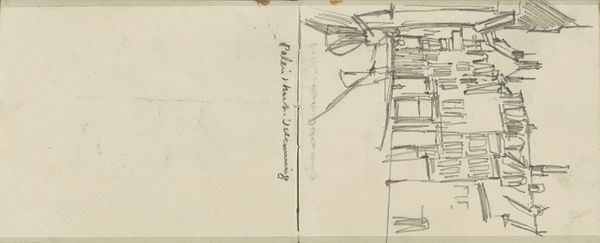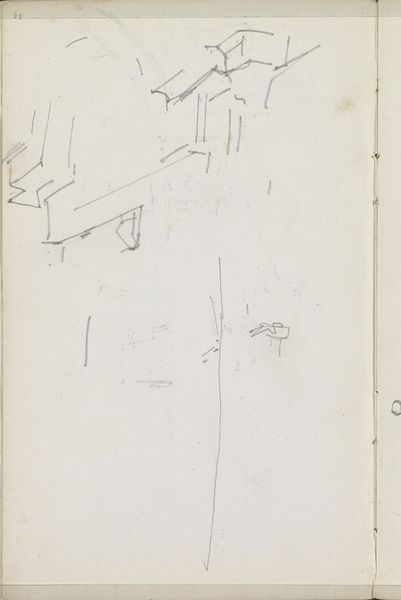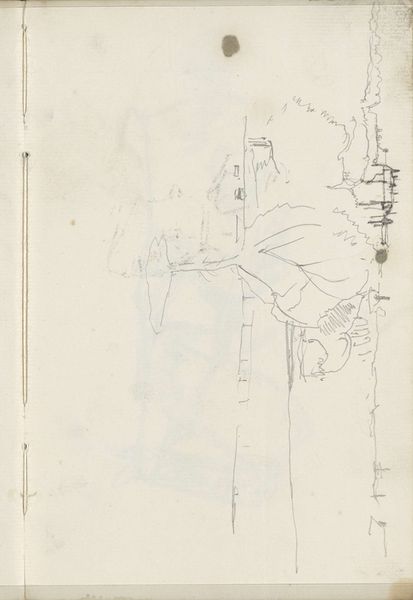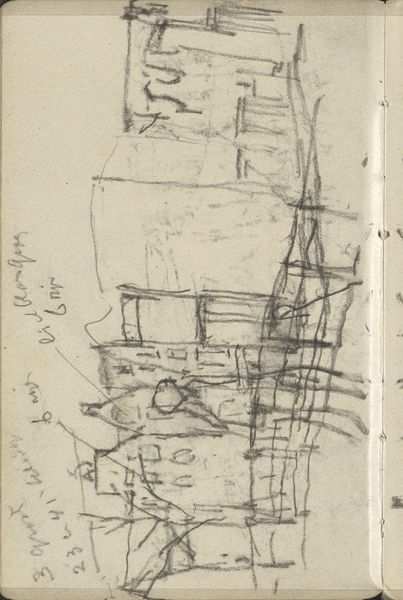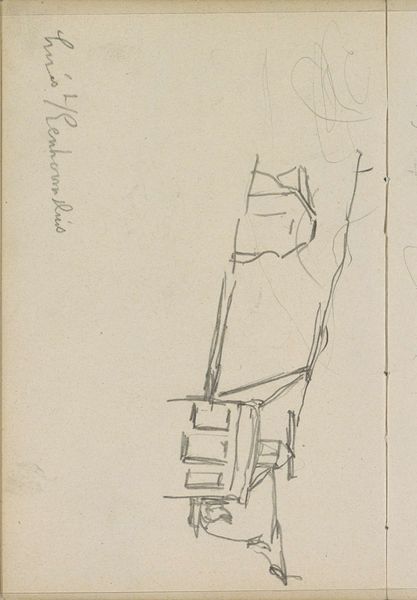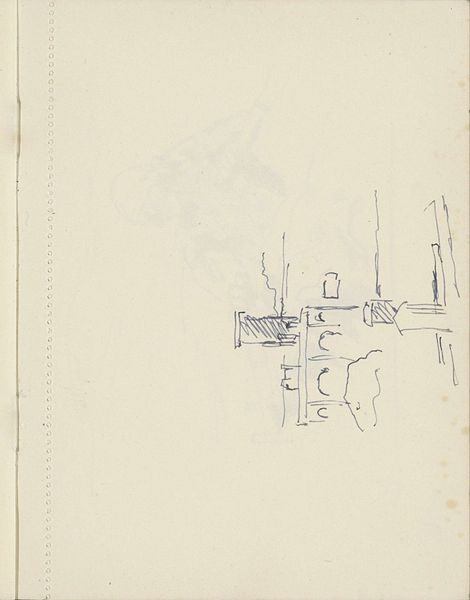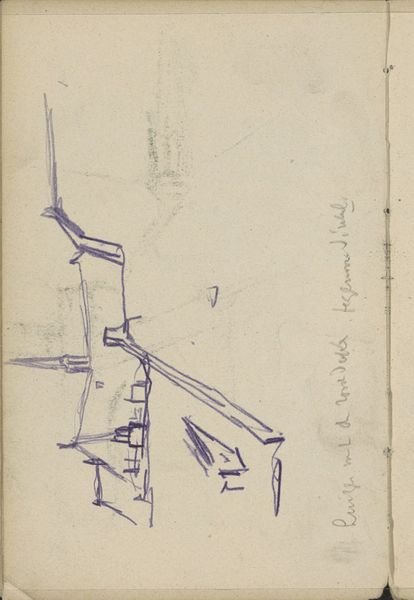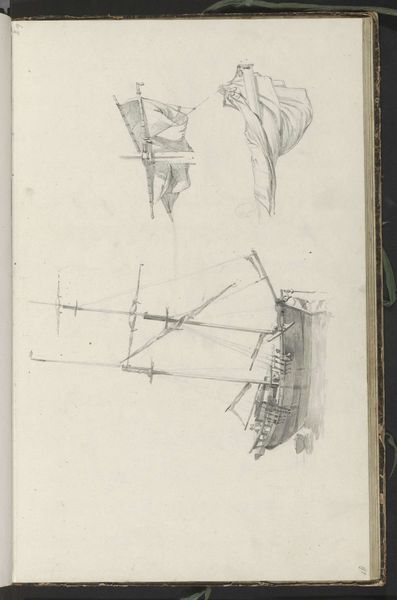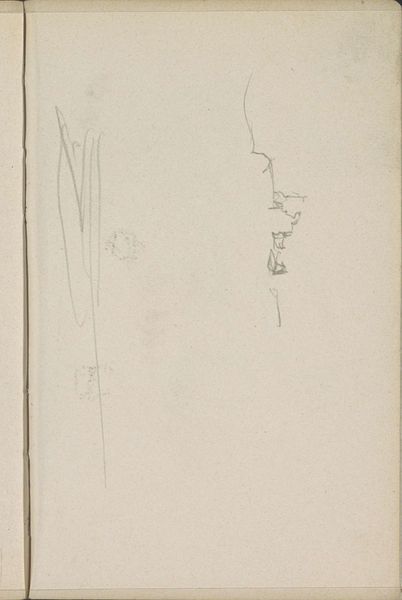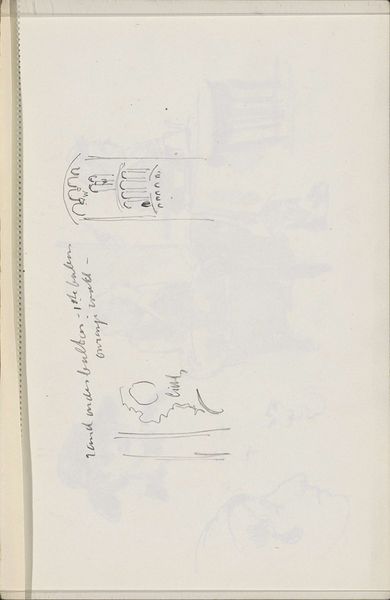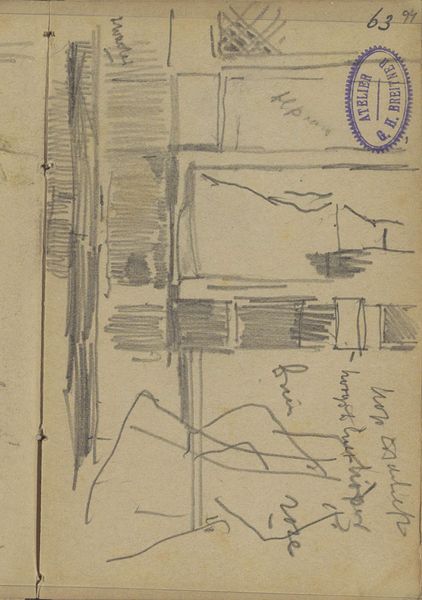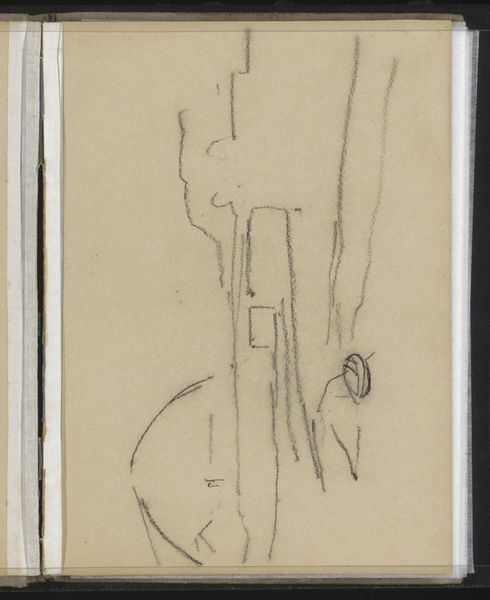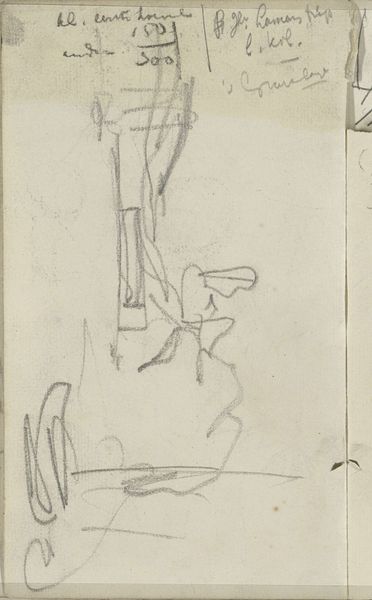
drawing, pencil
#
drawing
#
landscape
#
pencil
#
abstraction
Copyright: Rijks Museum: Open Domain
Editor: Right, next up we have “Steeg,” a pencil drawing from around 1915-1916 by George Hendrik Breitner, currently held in the Rijksmuseum collection. It's such a simple composition, almost like an architectural sketch. I'm intrigued by the visible marks of the artist's hand. What's your take on this piece? Curator: Well, consider the labor embedded in this "simple" sketch. Breitner isn’t just representing a "Steeg" – likely a back alley - he’s actively investigating the material realities of urban life, how these alleys came into being through urban expansion and industrial labor. It is also worth to think about his method, sketching on paper – how accessible and inexpensive were these materials, relative to painted canvas for example? And how that influenced his style. Editor: So, the accessibility of the medium influenced not only what he chose to draw, but how? Curator: Exactly. This sketch reveals Breitner’s process: a rapid, efficient mode of production. The drawing medium - pencil - suggests the industrial standardization of art supplies in the early 20th century and opens to new styles of fast impression records, very different from traditional landscape painting. Breitner captures a space shaped by often unseen and unacknowledged workers; this sketch itself functions almost as a document of their labor, memorializing urban processes of production. Editor: That makes me rethink my initial impression of simplicity. I now see it as a product of social forces influencing both subject and execution. The marks are almost like timestamps or little narratives themselves. Curator: Precisely. The artist and their marks have transformed a common place into art through labor. Do you think the sketch reflects Breitner's personal interaction with these urban places, or he stands distant from those realities? Editor: It’s difficult to say. Perhaps his proximity comes in understanding how urban spaces function as products of labor and making that function a tangible feature of his work. Curator: I agree. Looking at the artwork from a materialist perspective has illuminated new dimensions of it, as both documentation and transformation. Editor: It certainly did for me as well. I am left to consider this artwork as an outcome of industrial manufacture, while capturing a similar condition in the represented scene.
Comments
No comments
Be the first to comment and join the conversation on the ultimate creative platform.
